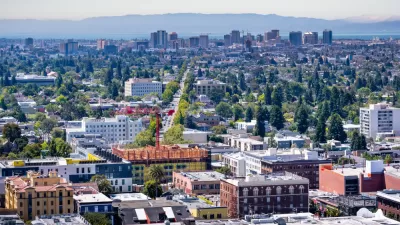With a final decision expected later this year, the California Public Utilities Commission recommended a $1.4 billion fine for PG&E in connection with violations leading to a natural gas explosion in 2010.
"State regulators on Tuesday proposed a $1.4 billion fine to punish PG&E for its role in a fatal natural gas explosion in San Bruno -- but the fines are far less than the $2.25 billion recommended by regulatory staff and consumer groups," reports George Avalos.
Two administrative law judges with the state Public Utilities Commission (PUC) recommended the fine. If finalized, the fine would be the largest safety related penalty ever issued by the PUC.
The PUC's Office of Ratepayer Advocates pushed for a much larger fine of $2.25 billion. If there is any indication that the lower penalty was good news for PG&E, the market provided one: "Shares of PG&E soared 3.5 percent soon after word spread of the proposed decision and spiked an intra-day high of $47.78 in late-session trades. PG&E closed at $47.29 on Tuesday, up 1.7 percent."
As for the negligence that precipitated the explosion in San Bruno, which killed eight people and destroyed 38 homes, "San Francisco-based PG&E committed about 3,800 violations of state and federal laws and regulations in connection with its natural gas operations, and because the infractions stretched back a period of years, the utility was in violation for a total of 18.4 million days, the proposed decision determined."
FULL STORY: PG&E to be fined $1.4 billion for San Bruno explosion

Study: Maui’s Plan to Convert Vacation Rentals to Long-Term Housing Could Cause Nearly $1 Billion Economic Loss
The plan would reduce visitor accommodation by 25,% resulting in 1,900 jobs lost.

North Texas Transit Leaders Tout Benefits of TOD for Growing Region
At a summit focused on transit-oriented development, policymakers discussed how North Texas’ expanded light rail system can serve as a tool for economic growth.

Why Should We Subsidize Public Transportation?
Many public transit agencies face financial stress due to rising costs, declining fare revenue, and declining subsidies. Transit advocates must provide a strong business case for increasing public transit funding.

How to Make US Trains Faster
Changes to boarding platforms and a switch to electric trains could improve U.S. passenger rail service without the added cost of high-speed rail.

Columbia’s Revitalized ‘Loop’ Is a Hub for Local Entrepreneurs
A focus on small businesses is helping a commercial corridor in Columbia, Missouri thrive.

Invasive Insect Threatens Minnesota’s Ash Forests
The Emerald Ash Borer is a rapidly spreading invasive pest threatening Minnesota’s ash trees, and homeowners are encouraged to plant diverse replacement species, avoid moving ash firewood, and monitor for signs of infestation.
Urban Design for Planners 1: Software Tools
This six-course series explores essential urban design concepts using open source software and equips planners with the tools they need to participate fully in the urban design process.
Planning for Universal Design
Learn the tools for implementing Universal Design in planning regulations.
City of Santa Clarita
Ascent Environmental
Institute for Housing and Urban Development Studies (IHS)
City of Grandview
Harvard GSD Executive Education
Toledo-Lucas County Plan Commissions
Salt Lake City
NYU Wagner Graduate School of Public Service




























